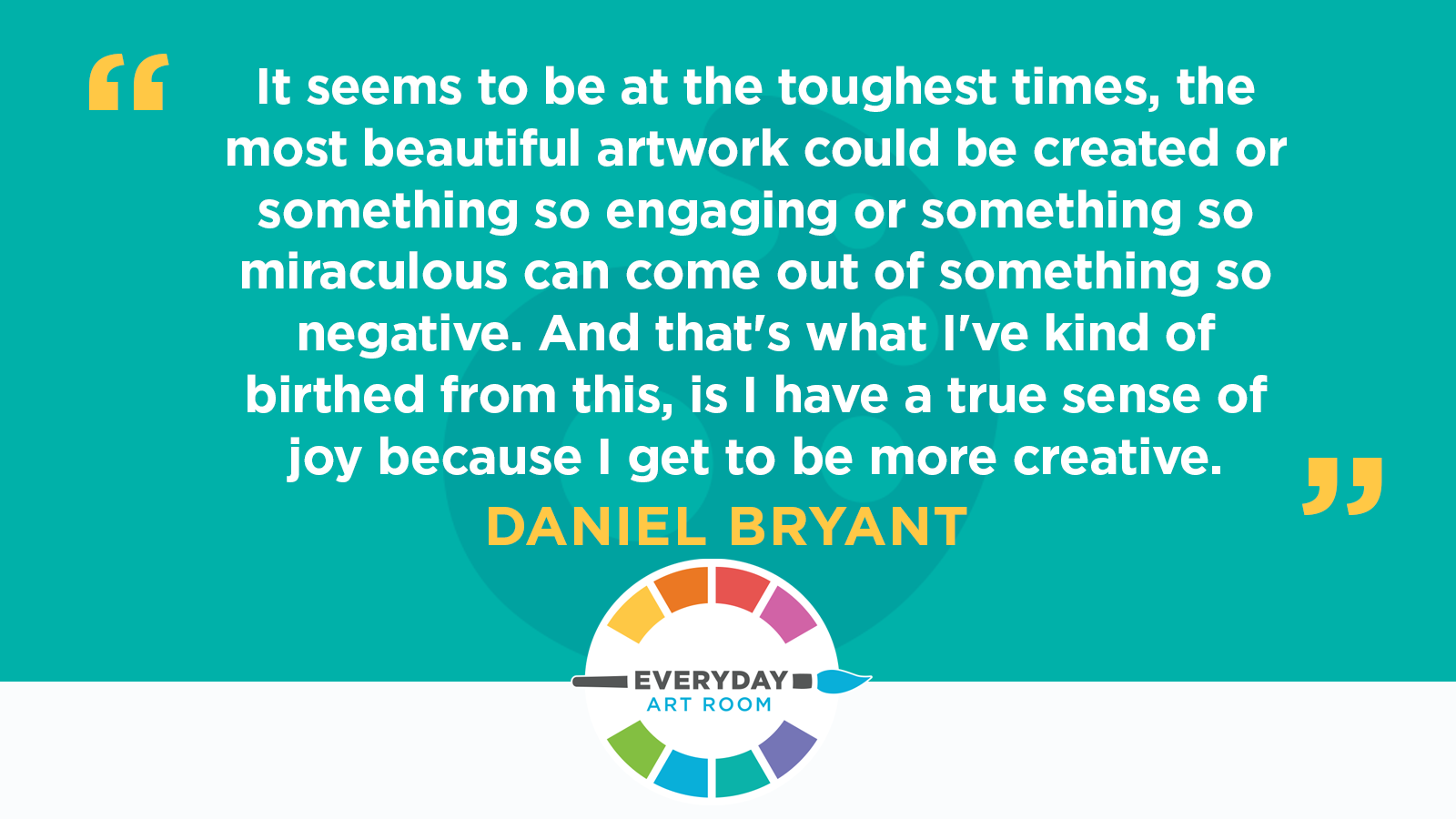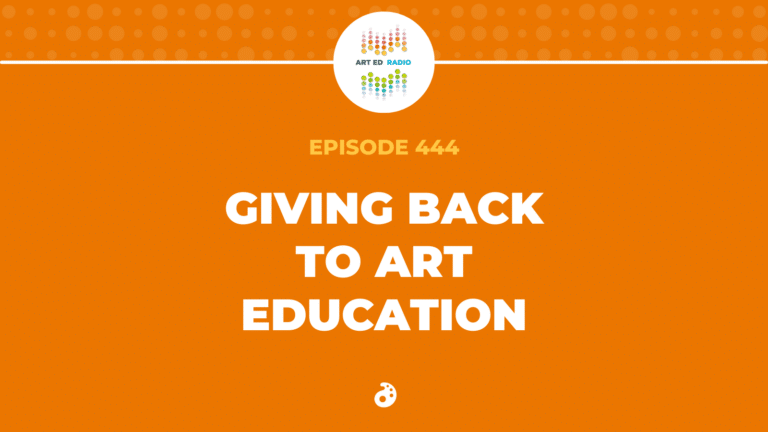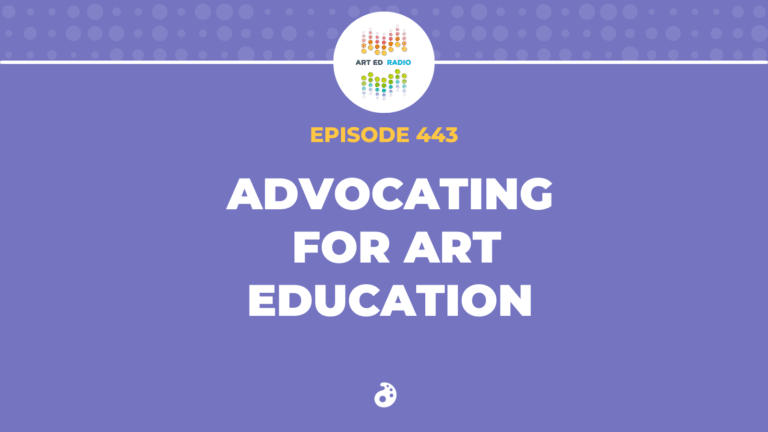In today’s episode, Nic welcomes on Daniel Bryant, an art teacher from Charleston, South Carolina. Daniel explains how and why he always chooses joy, and how that shapes his teaching and his worldview. Listen as he and Nic discuss joy, reconciliation, and the projects he develops for his students. Full Episode Transcript Below.
Resources and Links
- Follow Daniel on Instagram and Facebook
- Mr. Bryant Read Alongs
- Daniel’s Animation Work
- Boys of Valor

Transcript
Nic: Have you ever had one of those days where absolutely everything is going wrong? Maybe today is that day for you. Everything has gone wrong. If you are having a bad day, keep listening to this podcast. If you’re having an okay day, keep listening to this podcast. If today is the best day of your life, keep listening to this podcast because we are going to talk to a man today. His name is Daniel Bryant, and he chooses joy.
He’s going to tell us how and why he does that. And you won’t even be able to leave this podcast without being a happier person, no matter where you’re coming into it. This is Everyday Art Room, and I’m your host Nic Hahn.
I’m really excited to have you join us today because I’ve been following you on social media. I feel like that’s the beginning of many of my stories and my interviews, but just a huge fan of what you do. So, let’s get started by having you introduce yourself and kind of what your background is in education.
Daniel: Oh, thank you and thank you for having me. My name is Daniel Bryant, I’m from Charleston, South Carolina. I received my Bachelor’s of Arts degree in Youth Ministry from Charleston Southern University, where I minored in art and furthermore I received my studio art degree from the College of Charleston. And my road to art education was through alternative certification process. I got baptized by fire at a military school, I was to teaching art to these kids that were kicked out of the public school and they were sent to this school and it was a mixed group of guys. They had a whole bunch of learning disabilities and different issues going on and that developed a passion in me to go into the public school system to see if I could impact those kids, those Title I kids before they were kicked out. Just that whole experience at a military academy and teaching art there really opened my eyes to the need of a male educator in the public school system. So, yeah, that’s kind of my background there a little bit.
Nic: That’s super fascinating. So you didn’t do a traditional… A lot of us go to college for art education and you took this backdoor approach and just really, and like you said, dove in headfirst for sure.
Daniel: Yeah. Yep. Which I think I needed. Which made me ultra-sensitive to the needs of the students in order to connect and engage them in their own world, but also to the principles and elements of art.
Nic: Sure. Yeah. I know. It does go hand in hand, but sometimes relationships are the main focus, I feel.
Daniel: Yeah. Yup. Yeah.
Nic: And so tell me as far as art goes for your own personal self, are you interested in any particular genre or medium?
Daniel: Well, I’ve been a traditional studio artist for the longest time and when I went through the alternative certification process, I had to take a printmaking class and that printmaking class I was introduced to animation through a particular artist, I can’t remember the name of the artist. So that kind of stoked my interest in animation so I began to study and research on my own. I got a handle on some software and I began to teach myself how to produce animation, how to make my art move. I thought it would be so cool to the kids and also to myself. So that’s my particular medium I love, is computer animation and making the art move a little bit through illusion and things like that, so. But that would be my main medium.
Nic: I love it and I love that you bring it into your classroom as well. It’s a passion in your own self. And am I reading this correctly, you’re a published author as well, author/illustrator?
Daniel: Yes. Yes.
Nic: Tell me about that. Tell me about that.
Daniel: I believe I was doing some study on my ancestors and I was trying to trace some things just for a sense of self. And I just remember as I was reading and I was studying on that and going back to the late 1800s, I started just kind of sketching out these characters and I gave them names, Everett and Rodney. As I begin to sketch more and more, I said, you know what? I got something going here. Maybe I can add a story or a narrative that will honor my ancestors but also inform and entertain and those things that would grab as a children’s novel because it looks very friendly, but it also looks late 18th century, has that colonial look to it. So that’s how it kind of got started, kind of through research and study on my own and I called the book Everett and Rodney.
Nic: Is it available like?
Daniel: Yes, it’s available on Amazon and some of the art teachers through the Facebook website and other art forms have already purchased it and they loved it. They gave me glowing reviews about it. I’m very humble about it so I don’t say a whole lot and then-
Nic: Yeah, and then I force you, that’s right.
Daniel: So I do need to speak out more and talk about it more and my wife gets on me as well about it. She’s awesome and pushes me and I’m very proud of that.
Nic: Of course we’ll include it in our podcast notes here as well because I’m sure that people will be interested in some just, I think more so than sometimes going out there and purchasing that book or purchasing that item, it’s supporting each other in our network that we’re creating in art education too, so that’s really amazing.
Daniel: Yeah.
Nic: Okay, you are fascinating and we could just keep talking about you, but maybe we should bring it into the classroom a little bit as well.
Daniel: Yes. Yes. Yes. Definitely.
Nic: So tell me about the learning mode that you’re in. So when I’m talking about that, are you teaching online? Are you teaching in person? Are you doing a hybrid situation right now?
Daniel: Before Christmas break, we were on a hybrid model. I was only going into the special ed classroom, we call it cross-cat. So I was physically going into the special ed classroom and doing art with them physically. All the rest of my courses were virtually from the art room and that’s the model that we were currently under and now we’ve gone totally virtual and we’ll be this way out of home for two weeks and then we’ll reassess as soon as we get information to as far as how are we going to finish the school year.
Nic: Okay, okay, so there’s been a shift in what you’re doing and I am assuming it’s numbers-driven or maybe governmental or something like that?
Daniel: Yes, it will. Yes.
Nic: Okay. Okay. Yeah. And it’s such a silly question, like I hate even asking in my interviews about a learning model. We should just talk about teaching art, but yeah. Okay. So that gives us a good view of how things are shifting and changing for you, but here’s the thing that I know just from watching you and being a little number one fan club of yours, you choose joy on a regular basis and you emphasize that in what you put out there in the world. Let’s talk about joy in your life.
Daniel: And one of the things that this COVID, that we’re living definitely in an unprecedented time and we have never experienced something like this. However, it seems to be at the toughest times, the most beautiful artwork could be created or something so engaging or something so miraculous can come out of something so negative. And that’s what I’ve kind of birthed from this, is I have a true sense of joy because I get to be more creative. I get to use technology. I get to use the passion of animation and try to inspire my kids and engage them through this virtual boring process that many of them feel it’s boring. They want to be there. I want to be with the kids. I want to be in front of them, but it has forced me to choose joy and say, okay, I can’t change the situation, but what I can do is I can choose to have a positive mindset and find ways to engage my kids. I choose joy. And joy, it opens up those doors of creativity for me as an art teacher.
Nic: I love it. I love it. Yeah, and what I love about it even more, not only are you sharing this with your students in your school, but then you’re going above and beyond and you’re putting it out there to inspire other educators, mostly using Facebook, is that correct or do you have other platforms?
Daniel: I have a YouTube channel and Facebook is my main vehicle of sharing this information, so yeah. And Instagram, and I just started an Instagram page as well, Virtual Art Adventure, so just trying to keep that thing going.
Nic: Yep. I love it. Yeah and with social media, I know a lot of them talk to each other quite a bit so you’re able to post in one place and have it speak to another.
Daniel: Yes. Yes. Yes.
Nic: And then you’re reaching more people and really it seems like you’re just trying to share your passion. Do you have a purpose in your mind for your social media?
Daniel: Well, yes. To inspire and to not only inspire the people in my classroom, all my kids in my classroom but other teachers, because we’re all in this together. We’re all under the same banner and we’re all fighting the same enemy, are going in the same direction, and if I can inspire other art teachers or allow them and inspire them to choose joy along with me, we can get through this in a more smoother process, so.
Nic: Oh, I love it. I love it. Now, back when I approached you to possibly be a guest on Everyday Art Room, I asked what some of your passions were. And one of the things that you mentioned was racial reconciliation. And for me, that was kind of a new term. So I’d love to hear more about what you mean by that term, what it means in your life, and just talk more about that please.
Daniel: All right. What racial reconciliation means to me is that this COVID situation also allowed us to witness an event in our history where we see a person’s life was taken right there as the gentleman screamed for his mom or called for his mom, this whole world witnessed this injustice.
Nic: Yeah. Yes.
Daniel: And it really forced conversations, uncomfortable conversations that many of us didn’t want to have because we weren’t comfortable having those conversations. So the George Floyd incident really opened a lot of people’s eyes, both white and Black and other ethnicities to the atrocities and some of the things that we see, and it shone the light on that there is still room, major room for reconciliation. Yes, art makes everything beautiful and art brings people together. And yes, there’s good in this world but there’s still a need for us to be reconciled.
Nic: Yes.
Daniel: And I think having that mindset and how can I teach that or have that, that’s therapy through my artwork, through my lens. So, that’s what I mean by reconciliation. It still needs for us to come together and to eradicate racism, whether it’s systemic, or whether it’s hidden, or overt, there’s still a need there and how do we do that and how do we address that?
Nic: Yes. You also mentioned earlier in this podcast of faith within your heart. Do you think that your goal of racial reconciliation also has to do with your faith or is it purely race-based?
Daniel: Well, I would be lying to you if I said it had nothing to do with my faith.
Nic: Right.
Daniel: My very existence is based on my faith and I know that. I tread carefully because I don’t want to be overbearing on anyone, but I will not apologize for my faith and I believe that my faith grounds me, gives me joy, and allows me to see the need for racial reconciliation and not for hate and for other things that divides us.
Nic: Yes, and you wear that on your sleeve. It is bright and bold and beautiful and you don’t have to say those words with hesitation, I’m sharing it with the world.
Daniel: Okay.
Nic: And you do and it’s beautiful.
Daniel: My grandmother used to tell me that. She used to say, “You know what? People will not read books a whole lot, but they will read you,” so I guess that’s right.
Nic: Well, your grandma is wise. I like her a lot.
Daniel: Elizabeth Bryant was her name. Yes.
Nic: Beautiful.
Daniel: Yeah.
Nic: Beautiful. Now, everything that you’re saying, this is a little bit off what we had talked about earlier, but how are you bringing those ideas and those thoughts into your classroom? Are you talking about race with your students?
Daniel: I am but I’m doing it in subtle ways. I make sure I expose the kids to artists who may look like them, who may talk like them, who may think like them. I try to incorporate music and see that’s, oh, my goodness, music and art go hand in hand. Kempinski understood it, man. He did. Music and art go hand in hand. And if you can use things that the students connect with. If you can use hip hop and bring that into and connect it to, “Hey man, that’s weird, that’s it, and keep hearing these dudes were doing this man,” and if you could introduce them to artists that they can connect with and engage them, I think that is part of tearing down those walls of separation and division and a subtle way of saying, “Hey, we’re all the same.”
Nic: Yeah, absolutely. Right before Christmas, I was watching a lesson that you were doing with your students and you were kind of sharing about, it was a 3D nutcracker and I was wowed by it. Tell me about the program that you were using and the age you were doing these 3D drawings with.
Daniel: Yes. It’s a free program through Microsoft and it’s called Microsoft Paint 3D. And I was teaching this lesson and connecting the nutcracker to the holidays and this rich, awesome story. And normally when I teach this, it’s a paper lesson, so I decided to revamp it and make it a digital art lesson.
And originally was going to just teach it as a two dimensional lesson through Microsoft Paint. However, since we’ve been practicing in Microsoft Paint 3D, and we’ve been toying and playing around with that on my own and also I encourage them to do it as well, when I noticed that we can use three dimensional shapes and add a polished shine to them, I said, “Whoa, let’s make this two dimensional flat paper lesson, paint lesson, and now let’s make it more engaging and let’s make it using Microsoft paint 3D.” Now, these students, these fifth graders, they’ve kind of been my guinea pig class because since third grade I’ve introduced digital art to them, so they were wired and trained to use Microsoft Paint so introducing Microsoft Paint 3D was a challenge, but they embraced it and their projects came about in such a cool and an awesome way.
Nic: Well, I think you bring up a really good point that you can’t just try the first time and expect this amazing result. It’s the same as any kind of skill that you would teach in your classroom, you wouldn’t give intricate paper cutting to a kindergartner, you need to start with the basics. And you’re talking about building those skills third and fourth and fifth grade, and you find it really engaging for your students?
Daniel: Yes. Oh my goodness. They can’t wait to get on they can’t and they don’t want to leave. And I say, “I’m sorry but guys I’ve got to go. I got a kindergarten class waiting for me in the lobby, I can’t.” And that’s so rewarding as an art teacher is that they are engaged and they love and they’re connecting it to their world, and that’s the [inaudible 00:18:44].
Nic: Wow. You mentioned that you have a YouTube channel, do you have lessons on that channel or what is that mainly focused on?
Daniel: Well, the YouTube channel started because of COVID. Our principal wanted us to do read along since we were losing that connection to the kids. They wanted the kids to still see us so she decided that all the teachers would do some read aloud live videos. So I said, “You know what? That’s kind of boring. I want to make it more creative.” So I decided to record my readings with animations and voiceovers and sound effects to really engage the reader, to put the reader inside the story. So I even did some voice characters and things like that. So, I started a page called Mr. Bryant Read Along, so I have a series of books that I read aloud and I edit them and I’ve added special effects to them, just to kind of really engage the reader.
Nic: Oh, I love it. I’m sure it was helpful on both ends, like it was fun for you to do as well.
Daniel: Yes, it was, very, very.
Nic: And you know what? One of the gifts of teaching remotely is that you’re entering into the homes of all of your students and their parents are seeing you and they’re seeing that passion and the students are, you’re right in the house, so that’s pretty amazing.
Daniel: You know what I love? Is I love when a little brother or a little sister starts to peak in on the lesson and I welcome them. I say, “Hey brother. Hey, I don’t know your name, but hey, hey, come on in.” They weren’t seeing the excitement of their sibling and they say, “Hey, I want to get in on this as well. I can’t pick up a pencil but if something’s going on, I like that.”
Nic: Exactly and guess what? You will know that child eventually if you stay at school.
Daniel: With me. Yes. Yes.
Nic: And you will have much more interaction of you, that fun, that, yeah, read in their house, that is amazing. There is a lot of silver lining, isn’t there in this?
Daniel: There is, there is definitely.
Nic: Well, Daniel, I cannot thank you enough for joining me today. I really enjoyed our conversation.
Daniel: I have as well. I’m very delighted that you decided to have me on. I’m blessed, thank you.
Nic: I cannot thank Daniel enough for joining me today and some of the things that the editing crew here does really erased a lot of the issues that we had with our recording. I want to give you a little insight on how this recording went. I approached Daniel weeks ago and we started a conversation back and forth.
Every time that there’s an interview on Everyday Art Room, it takes a long time to actually come to fruition because we create a template. We talk about what the passion of the person is. We communicate back and forth several times before actually doing a recording. And most of the time, that recording goes fairly smoothly. We chat with each other, record it, and I pass it on to the editing team, which does wonders and gets rid of all of our little misspeakings and whatnot.
Well, this time we joined in on our recording and all of a sudden it dropped out and I was thinking that I just lost 17 minutes of content, really, really good content, the content that you heard because we actually did not lose it. Thank goodness. But I was worried to use that same platform again so we switched to another platform and we weren’t able to hear each other. And then we switched to another platform where we were able to hear each other, but we could not record.
So, here we are, once again, joining each other on the phone, trying to figure this out and the first platform for some miracle just starts working again. I hit record and we recorded the last five minutes of this episode. You guys, if you think that this man is not a person who chooses joy after listening to this, you weren’t listening, because absolutely with all those bumps and the additional time it took us to figure this out and get this recorded, he was still smiling. He was still spreading the joy.
I appreciate the conversation with Daniel Bryant. I’m sure you do as well. Reach out to him, look at our podcast notes, make sure that you tell him what an amazing person he is and then look into some of his resources, go investigate his book, go investigate his YouTube, watch him on Facebook, and now on Instagram, all are on the podcast notes. And again, we just want to thank you from The Art of Education and me personally. I appreciate the conversation that we had today.
Magazine articles and podcasts are opinions of professional education contributors and do not necessarily represent the position of the Art of Education University (AOEU) or its academic offerings. Contributors use terms in the way they are most often talked about in the scope of their educational experiences.



